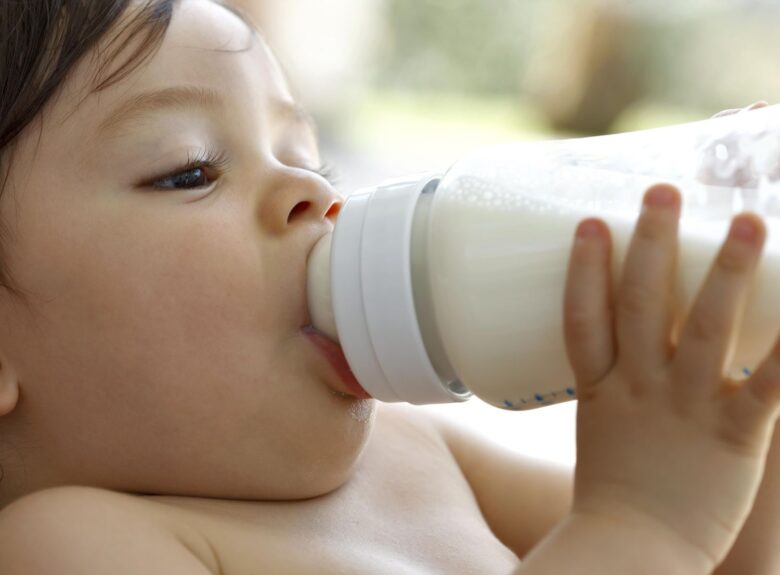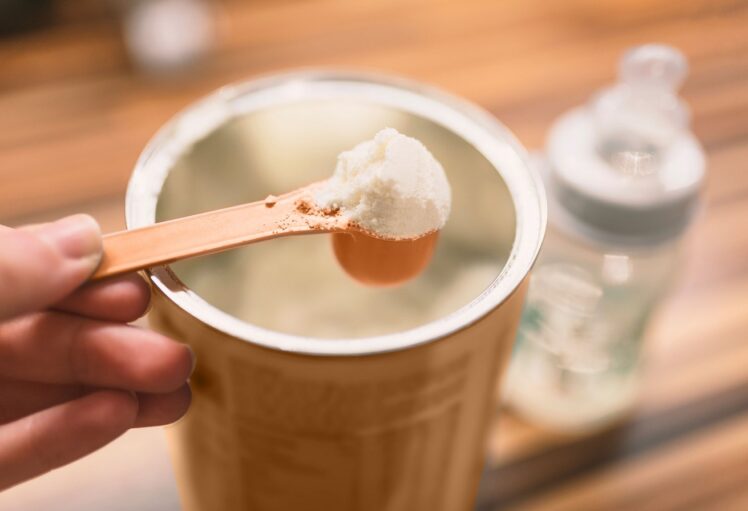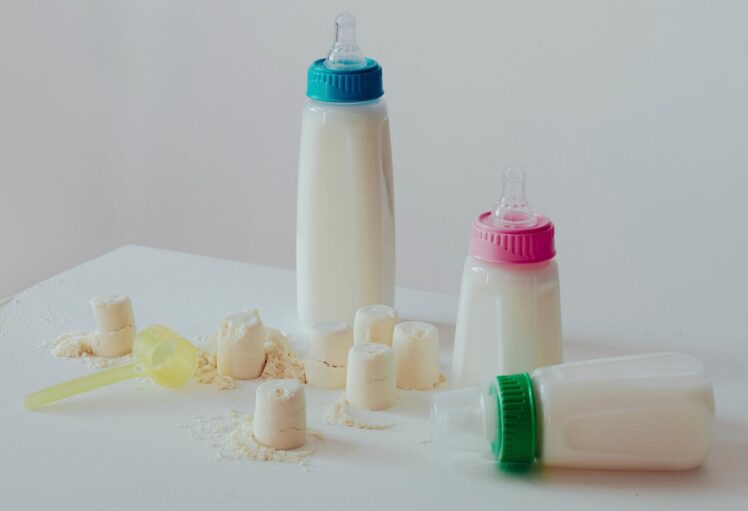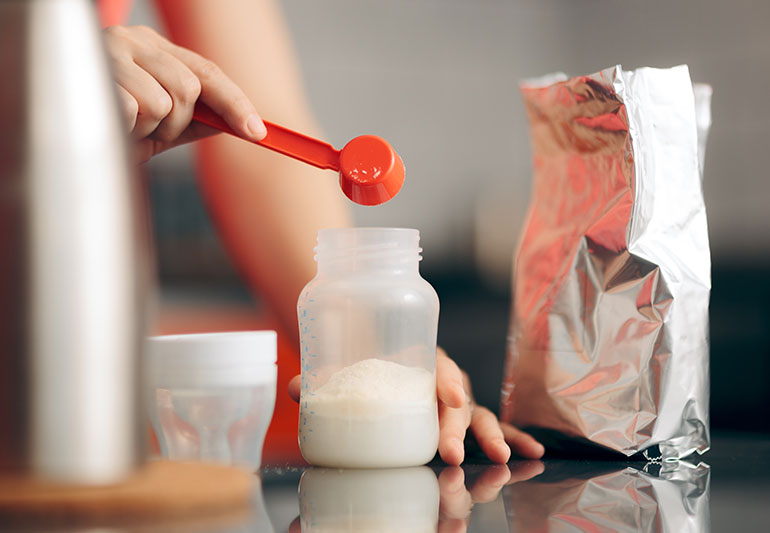Navigating the world of infant and toddler nourishment can be a maze of labels, ingredients, and claims. How does one discern between the two main pillars of child nutrition – infant formula and toddler formula? Let’s break it down, section by section, casting light on the key variances.
Contents
- Nutritional Composition
- Developmental Stage and Needs
- Ingredients and Additives
- Digestibility and Tolerance
- Nutritional Regulations
- Transitioning from Infant to Toddler Formula
- Feeding Recommendations
- Allergies and Sensitivities
- Potential Health Benefits
- Considerations for Special Cases
- Parental Preferences and Choices
- Final Thoughts
Nutritional Composition
When we peek into the basic nutritional makeup, it becomes clear that infant formulas like HiPP Combiotic primarily cater to the initial growth spurt. With higher levels of crucial components like protein, fats, and certain vitamins, they mimic the essential nutrients found in breast milk. This ensures infants receive all they need in their earliest stages of development.
On the flip side, toddler concoctions are designed for those little ones transitioning from baby formula or breast milk to solid foods. They fill in the nutritional gaps often left by picky eaters. Richer in calcium and phosphorus, they support bone growth while also boasting higher iron levels to aid cognitive growth.

Source: verywellfamily.com
Developmental Stage and Needs
During the first year of life, a baby’s brain develops at a breathtaking pace. Hence, infant nourishments are packed with DHA and ARA, fatty acids pivotal for neural and visual development. These mixtures support rapid growth and establish a foundation for good health.
By contrast, the toddler phase witnesses a deceleration in growth rate. Toddlers become mobile, exploring their environment more. Their formula tends to have nutrients that fuel physical activity and steady growth. Think of it as moving from an intensive growth-support solution to a maintenance and exploration one.
Ingredients and Additives
Peeling back the label of an infant product reveals a tighter list of ingredients. Due to the sensitive nature of a baby’s gut, these formulas aim for simplicity, often excluding non-essential additives.
When you examine toddler drinks, they might have a broader range of ingredients. Probiotics, prebiotics, and even some flavors could be present. These additions can assist in developing a diverse gut microbiota, crucial for a maturing digestive system.
Digestibility and Tolerance
Babies, with their immature digestive systems, require concoctions that are easy to digest. Infant options predominantly use nonfat cow’s milk, broken down into smaller proteins, aiding easier absorption and reducing the risk of allergies.
Toddler alternatives, however, embrace a more varied base. They might include whole cow’s milk, soy, or even goat’s milk. With a more robust digestive system in play, toddlers can handle these diverse bases, each presenting its own set of benefits.

Source: NCT.com
Nutritional Regulations
Regulatory bodies, like the FDA, impose stringent controls on infant blends. They set specific minimum and maximum levels for 29 nutrients to ensure babies receive optimal care. Consistency is paramount, as a baby’s sole source of nutrition could be these formulas.
While toddler brews still undergo regulatory scrutiny, they have more flexibility. It’s crucial to remember that at this stage, the formula isn’t the only source of nutrition, as solid foods enter the mix.
Transitioning from Infant to Toddler Formula
There’s an art to transitioning. It’s recommended to commence this shift around the one-year mark. Begin by blending both types, gradually adjusting the mix until the toddler version dominates.
But it’s not solely about the nutritional shift. This transition often coincides with the move to sippy cups from bottles. It’s a dance of change, where taste preferences mature and feeding habits evolve.
Feeding Recommendations
For babies, their feeding chart revolves around the formula. Parents and caregivers get precise recommendations based on age and weight, ensuring the child’s nutritional needs are met.
As toddlers grow, these guidelines become flexible. While formula remains a key component, its role diminishes, making way for a broader range of foods. Parents are encouraged to follow their child’s cues and balance formula intake with solid foods.

Source: medium.com
Allergies and Sensitivities
Allergies in infants can be a serious concern. Hence, many infant products undergo rigorous testing, and there are hypoallergenic varieties available.
With toddlers, as their exposure to diverse foods grows, so does their potential to develop sensitivities. However, there’s a silver lining: a wider range of formula bases, from soy to goat’s milk, offers alternatives catering to these sensitivities.
Potential Health Benefits
Beyond the evident growth support, infant products provide immune system benefits, as they contain antibodies and other vital components mirroring breast milk.
Toddler drinks, apart from bridging nutritional gaps, promote a healthy gut, thanks to their probiotics and prebiotics. They can be a crucial ally against common toddler troubles like constipation.
Considerations for Special Cases
Certain children might have unique health or developmental concerns that influence their nutritional requirements. Preterm babies, for instance, often require specialized formula fortified with more proteins, calories, and essential minerals to catch up in growth. Similarly, children with metabolic disorders, like phenylketonuria, need custom concoctions tailored to bypass their metabolic limitations, ensuring they thrive without complications.
For children with severe gastrointestinal issues, feeding could be a challenge. These young ones might benefit from elemental formulas, where proteins are broken down to their most basic forms for easier digestion and absorption. Other cases, such as those with reflux, might need thicker formulations, helping to keep the feed down and minimize discomfort.

Source: health.clevelandclinic.org
Parental Preferences and Choices
At the heart of every decision concerning a child’s nutrition, lies the parent’s intuition, research, and consultation. Today’s market offers a plethora of options, from organic to non-GMO formulas. Environmentally conscious parents might lean towards brands employing sustainable practices, while those with vegan lifestyles could opt for plant-based concoctions.
However, parents need to tread carefully, ensuring personal preferences don’t overshadow a child’s immediate nutritional needs. Collaborating with pediatricians or nutritionists can strike a balance, marrying parental values with optimal child health outcomes. This collaborative approach empowers parents, allowing them to make informed choices that resonate with both their beliefs and their child’s well-being.
Final Thoughts
Understanding the contrast between infant and toddler formulas is akin to appreciating the nuances in every stage of a child’s growth. Each phase has its own set of demands and wonders. And in the end, the right nourishment plays a pivotal role in ensuring our little ones thrive in every stage. Whether it’s an infant taking their first steps into the world or a curious toddler ready to explore, there’s a formula tailored to their unique journey.
